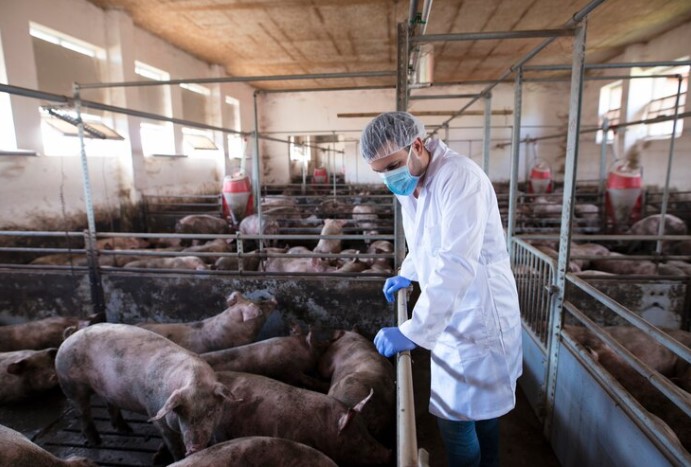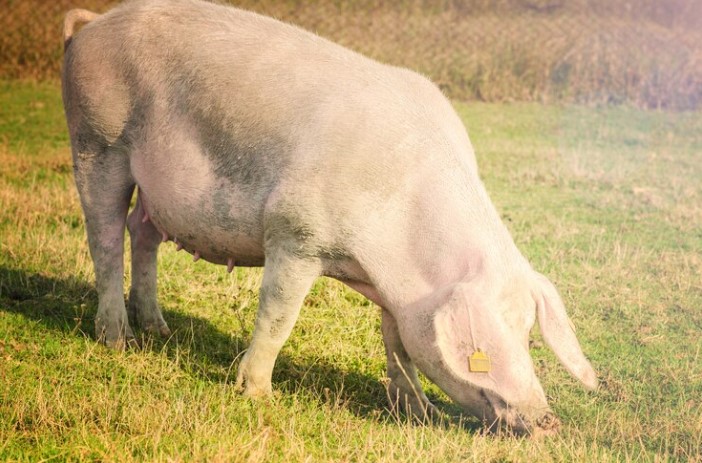Like other businesses, pig farming has made the rich in the country, while some pig rearers complain of losses. Is pig farming in Kenya worth the risk?
Pig farming in Kenya is profitable when you observe the best practices. Some of the top-performing breeds in the country include Duroc, Hampshire, Landrace, Large White, and Yorkshire.
The high demand for pork in Kenya ensures that pig farmers have a ready market for their animal products. It also means they rake in huge profits when they meet the quality and supply standards of the market.
In this guide, you will learn
- How to start pig farming in Kenya in 2023
- Benefits of pig farming
- Challenges of pig farming and the best practices to increase profitability

Let’s delve in!
What Is Pig Farming Business?

Pig farming is raising and breeding pigs for selling. Also known as hog or pork farming, this business entails selling pig meat and other pig products such as skin.
Why Invest in Pig Farming in Kenya?
- High Demand: Kenya consumes 300,000 metric tonnes of pork every year. This means investing in pork farming makes you enjoy a ready market for your products.
- Value Addition: With value addition, you can produce processed pork products such as bacon, ham, and sausages to increase your business profitability.
- International Market Access: The Middle East and Asia have a growing demand for pork. As a result, pig farmers in Kenya can take advantage of this and export their products at top dollar.
- Increasing Demand for Organic Pork: The growing demand for organic pork creates a ready market, making pig farming profitable.
- Biogas: Did you know you can power your house with biogas production from pig manure? Pig farming rakes in massive profits and takes care of your power needs!
Challenges of Pig Farming in Kenya (And Best Practices)

Similar to any other investment, pig farming faces different challenges. Fortunately, with the proper practices, you can mitigate the risks and maximize profitability.
So, what are the challenges of pig farming, and how can you maneuver them?
1. High Feed Cost
In almost the past two years, Kenya has experienced maize shortage, which is a primary ingredient for pig feed. Consequently, feed expenses have spiked, eating away farmers’ profits.
Best Practice: To solve this, you should use part of your land to plant maize, soybeans, and sorghum. These three, when mixed, provide a balanced diet for your pigs to grow healthy, meeting the market standards.
2. Disease Outbreaks
Let’s face it: farming across the country, whether plantation or animal rearing, encounters a fundamental problem: diseases. Pig farming is not left behind in this, meaning you might lose your pig ranch to Foot and Mouth and African Swine during an outbreak.
But how can you solve this?
Best Practice: You should establish an effective disease management program to avoid losing your livestock to diseases. This can include proper hygiene practices, regular vaccination, and quarantine procedures.
3. Inadequate Technical Skills
You need breeding, disease management, and feeding skills to succeed in pig farming. Unfortunately, most Kenyan pig farmers lack the technical skills to realize their business goals.
Best Practice: You can maximize your business profitability by attending training and seeking extension services. For instance, attend workshops, collaborate with extension officers, and join farmers’ groups in the country.
4. Poor Market Connection
Agribusiness in Kenya has faced a severe challenge: poor market connection within and outside the country. Small-scale farmers are more affected since they have not interacted with key market players.
Best Practices: Marketing and value addition can help you solve this challenge. Start by identifying the right market for your business, then produce products like bacon and sausages to increase your business profitability.
5. Cultural Stigma
A common challenge in pig farming is the cultural stigma farmers have to bear. In some communities, pigs are considered unclean, making farmers a key target for stigma.
Best Practices: Since this can affect your profitability, you should establish your pig farming business in a high-demand region.
How To Start Pig Farming in Kenya; Pig Farming Requirements

Venturing into the pig farming business demands that you acquire the following
1. Suitable Land
The location and size of land for pig farming Kenya will determine your business outcomes.
Remember, not all communities support pig farming, meaning if you establish your business in such areas, you’ll face low demand for your products.
Again, the infrastructure and resource accessibility will impact how well your pigs perform. So when choosing land, ensure there is
- Enough water supply from the rivers, wells, or pond
- Easy market accessibility
- Cheap labor is guaranteed in the villages.
- Affordable feed elements such as maize and sorghum
- Efficient transportation
- Easy accessibility to veterinary services
- Quiet and calm environment
2. Proper Housing
Your piggeries should have sufficient space since overcrowding increases the risk of disease spread. For instance, if you’re raising two swine, you will need a 20 by 24-meter shed.
The main sections of your pigs’ shed include the feeding area, water section, sleeping area, quarantine room, and extra space for moving around. Also, to avoid the messiness they come with, construct a concrete shed instead of a muddy one.
Remember, your pig shed should be warm as pigs are prone to pneumonia, and you don’t want losses.
3. Feeding Requirements
The best nutrient combo for proper weight gain and health includes vitamins and proteins. Since pigs are omnivores, you can combine commercial feed with grains, vegetables, kitchen waste, and meat to supplement their nutritional requirements.
How Much Do I Need To Start Pig Farming In Kenya?
The cost of farming in Kenya varies due to factors like number of pigs, feed cost, and labor cost in your location. Here is what you should expect
- Housing between Kshs 30,000 – Kshs 200,000
- Feed cost Kshs 2,000 – Kshs 4,500
- Labor cost varies depending on your location’s wage standards
- Health management costs, including medication, vaccination, and veterinary services
- Breeding costs covering artificial insemination or securing breeding stock
So, you will work with a budget of Kshs 40,000 and above, depending on your farm’s size.
Tip: To succeed in this business, you must apply record keeping. This way, you will keep track of the cash going out and that coming in, helping you maximize your business profitability. Again, learning breeding and genetics as you expand your business will improve your pigs’ productivity.
4 Most Profitable Pig Breeds in Kenya
The pig breeds that perform well in Kenya include
1. Large White

The Large White breed has exceptional feed conversion efficiency, a fast growth rate, and good meat quality. It is the most popular breed in the country due to its impeccable features.
This breed has a robust body that can withstand various weather conditions and produces 10 to 12 piglets. Usually white, the Large White pigs perform well in intensive production plans.
2. Duroc Jersey

Popularly referred to as the Red Hogs, Duroc Jersey is an American Hog breed that does well in cold and wet conditions. It has sweet meat, making it a popular breed in pig farming in Kenya.
Usually red, the Durco Jersey produces the best bacon and is also ideal for the outdoors since it’s not vulnerable to sunburns.
However, it is characterized by less litter size than the other pig breeds. Hence, your herd’s growth is slower.
3. The Landrace

This white-skinned pig boasts a long middle and exceptional ham growth. They produce fresh pork and bacon, which customers find ideal.
They are also popular in Kenya due to their outstanding mothering abilities. Typically, they produce 10 to 15 piglets in one farrowing, making them highly profitable.
4. Hampshire

Hampshire is famous for producing the leanest meat. This breed is white and black and is mainly used for crossbreeding since it boasts a high growth rate and quality meat.
Frequently Asked Questions
1. How Much Is 1 Pig in Kenya?
A boar costs Kshs 40,000, while a pregnant sow is Kshs 60,000. Suppose you want to start small pig farming in Kenya; you will part with Kshs 120,000 to secure 2 pregnant swine.
2. Which Type of Pig Grows Faster?
Large White and Landrace have been known to grow fast. However, farmers have discovered a way of securing the fastest-growing herd through crossbreeding.
That’s why attending breeding and genetics training is significant to learn how to increase your herd’s productivity and profitability.
Conclusion
Want to establish a profitable agribusiness? Pig farming in Kenya is one of the most lucrative sectors. Actually, you can become a millionaire through pig farming. How?
To begin with, identify the best-performing breed in the country and find a suitable location that promotes its growth. Then, build a proper structure and establish a consistent feed and veterinary services source.
Finalize by performing best practices to maximize your herd’s productivity and returns.
Also Read:







